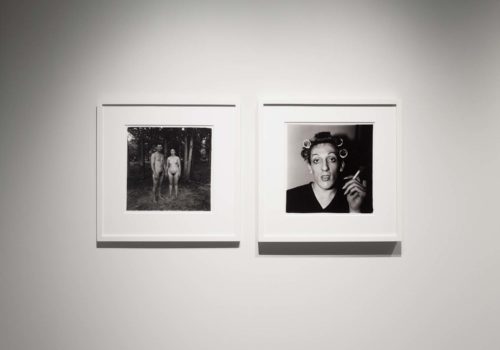For those of you planning a visit to the San Francisco Bay Area (best weather is in May and September), there are many wonderful places to view photography, but recently I had the accidental pleasure of viewing three private collections and realized that this is a very particular genre of collecting in its own right. Each of the three exhibitions I visited is unique in its vision and presents interesting questions about collecting. And, each is housed in a lovely setting that would make it worthwhile to weave a visit to each into a larger vacation here.
Pier 24
This is, of course, where the amazing Pilara collection is housed. The Pilara foundation bought a decrepit warehouse on a pier in San Francisco and has transformed it into the most technologically and aesthetically perfect gallery possible. The view from the pier out on the Bay is spectacular and once you are inside, you are hermetically sealed in an amazing photo wonderland. But you must make an appointment beforehand online.
Certainly one of the premier private collection in the US, if not the globe, it was amassed relatively quickly and largely under the direction of gallerist Jeffrey Fraenkel and, therefore, mostly reflects his understanding of and access to the finest examples of photography. The 2,000 images are meant to be a cultural resource and so the selections are made with a scholarly frame of mind. The emphasis is on American photographers and this is perhaps a bias of Fraenkel.
The current exhibit is “About Face,” (through February 2013). Drawn largely from the Pilara Foundation’s permanent collection, but with images on loan. This is far and away the most complete examination of the idea of the photographic portrait imaginable. The exhibit, curated by Executive Director Christopher McCall, is dense literally and intellectually, but is also playful, engaging and endlessly thought provoking. There is a surface sense of cacophany that one quickly realizes is supported with an enormous knowledge base. The show has plenty of Richard Avedon: a portrait of the photographer presides over the entry desk like a patron saint, and he has two rooms for “In the American West” and “The Family”. Of the 1,000 images on display, here are a few of my favorite stops:
– Retratos pintados from Brazil: anonymous paintings munged together from photos taken across time and space. So, there might be the visage of an old widow next to her husband, except the only photo she has of him was in his prime, wearing a full beard, a full head of hair and a snazzy plaid suit.
– Room 4/Selected Portraits: a couple of great surprises here. A giant image by Gillian Wearing posing as Diane Arbus next to a little known self-portrait by Dianne Arbusat the very onset of her exploration of photography. Another is Lange’s “Migrant Mother” placed next to a Rineke Dijkstra.
– Room 7/mugshots: three different styles of mug shots make this voyeuristic type of subject matter into a medium in and of itself.
– Room 6/ August Sander: this artist seems to be ubiquitous in photography exhibits now and, as his work tends to do in all the other shows, this roomful of his portraits seems to legitimize the rest of the show, though Mr. McCall might feel Avedon is the godfather of the portrait…
– Room 18/Lee Friedlander self-portraits: never before assembled all together.
– Room 17/ 100 years: if this series of portraits documenting people aged 8 weeks to 100 years old wasn’t in this particular show, I would not like it as much. The other works makes this one stronger.
– Room 20: Larry Sultan’s “SF Society” and Jim Goldberg’s “Rich and Poor”; especially because one of Sultan’s doyenne’s looks patronizingly down at one of Goldberg’s poor and self-revealing subjects.
While I was roaming the 20 rooms, another visitor was walking with a volunteer docent, trying to name all the photographers and checking himself against a list. For a while I followed, eager to know who made each photograph and when. Pier 24 does not ever put up title cards or text because they insist that people have a pure experience of the images. Those cards are always a blessing and a curse. Once I decided to give in and not try to recognize the images I really did have a superior experience. There are learned people available to be one’s personal tutor at any time. An integral part of my visit was my exit from this quiet, clean experience of humanity onto the busy street upon which a roiling, colorful, and smelly humanity invaded my senses.
















